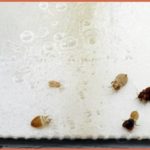In many homes, bed bugs in mattresses have become a growing concern. These tiny parasitic insects have managed to establish themselves in different parts of the world, infesting beds and causing discomfort to their occupants.
Pics of Bed Bugs on Mattress
In this article, we will explore the problem of bed bugs in mattresses in detail, from how to identify their presence to the most effective preventive and control measures. We’ll discover the characteristic signs of a bed bug infestation, as well as the recommended methods for cleaning and treating affected mattresses. In addition, we will provide practical advice to prevent the appearance of bedbugs and maintain a safe rest environment free of pests.
What do bed bugs look like?
Adult bed bugs are small insects with an oval and flat shape, with a size that can vary between 4 and 7 millimeters in length. They have a reddish-brown body, although their hue can change depending on whether they have recently ingested blood. Its abdomen is segmented and has a series of short hairs on its surface. The head of adult bed bugs possesses a pair of long, slender antennae, as well as a pair of compound eyes and an elongated mouth adapted for piercing skin and sucking blood.
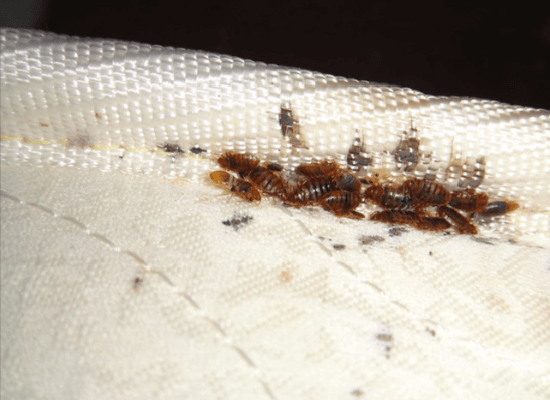
Throughout their lives, adult bed bugs can experience different feeding states, which can affect their appearance. In general, these insects are characterized by their flat appearance, and their ability to hide in cracks and crevices, which allows them to infest beds, furniture, and other spaces inhabited by humans.
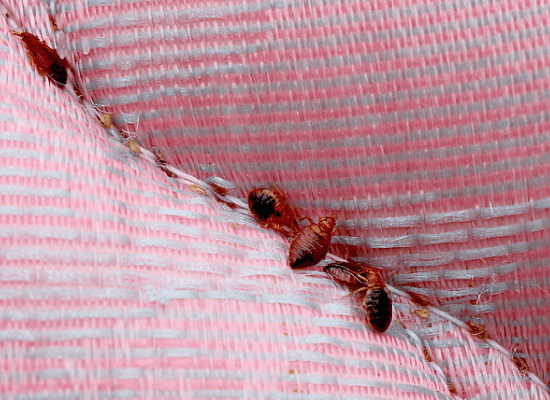
What do eggs and babies look like?
Bed bug eggs are extremely small and difficult to detect with the naked eye. They are oval in shape and are usually white to translucent in color. Eggs are laid in cracks and crevices near areas where bed bugs feed, such as beds and furniture.
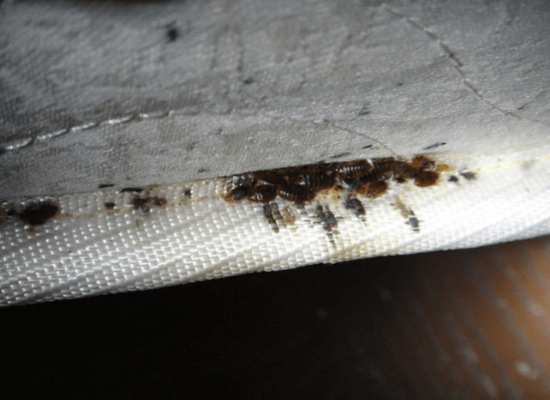
Nymphs, on the other hand, are the immature hatchlings of bed bugs and go through five growth stages before becoming adults. As the nymphs develop, they change in size and color. In the early stages, they are light in color, nearly transparent, and resemble adults in shape. As they progress into the later stages, they take on a darker coloration, similar to adults, and become more recognizable. The nymphs are also flat and look similar to the adults, but are smaller. These insects do not have wings, so they cannot fly.
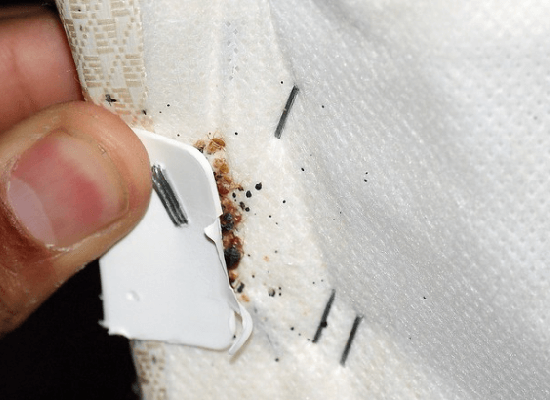
What does a mattress with bed bugs look like?
A bed bug-infested mattress can have several visible signs. Bed bugs often leave reddish-brown stains on the surface of the mattress, which are excrement and traces of digested blood. It is also possible to find groups of eggs, which are small and white. Another indication of a bed bug infestation is the shedding of skin that these insects leave behind as they grow.
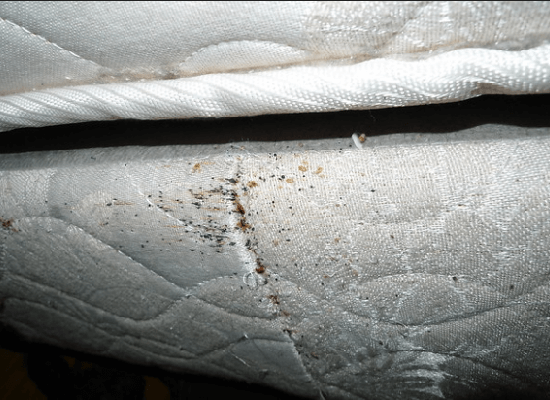
In addition, it is possible to observe adult forms or nymphs in the seams, folds, or cracks of the mattress. In general, a mattress with bed bugs may have an unsightly appearance and visible stains, indicating the need to take steps to eliminate the infestation.
Droppings on mattress
Bed bug droppings on mattresses are often reddish-brown in color. These spots can appear as small scattered blobs or in narrow lines. As bed bugs feed on blood, they excrete feces that contain traces of digested blood. These stains can be found on the sheets, mattress covers, and on the mattress surface itself.

Bed bug droppings are a sure sign of an infestation and should be addressed immediately to prevent further spread of the bugs.
With these pics of bed bugs on the mattress, you will be able to easily identify this pest to take quick corrective actions and thus avoid headaches.
How to clean and properly treat a mattress with bedbugs?
To properly clean and treat a bed bug-infested mattress, the following measures can be followed. First, it is important to wash all bedding and pillowcases in hot water, followed by high-temperature drying to kill bed bugs and their eggs. Second, the mattress should be thoroughly vacuumed, paying particular attention to seams, folds, and crevices, using a vacuum with a fine-nozzle attachment. This will help remove the insects, their eggs, and associated debris.
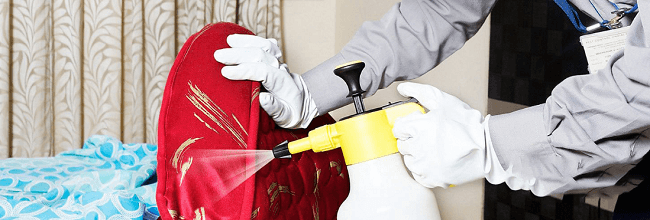
Finally, you can consider the use of specific chemical treatments for bed bugs, such as professionally recommended insecticides or natural products such as neem oil. These treatments should be applied following the manufacturer’s instructions and making sure the mattress is completely dry before using it again. It is important to remember that if the infestation is severe, it may be necessary to seek the help of a professional exterminator for effective bed bug removal.
Recommendations:
To avoid the presence of bedbugs in mattresses, these recommendations can be followed.
- It is essential to maintain good hygiene and cleanliness in the room. Regularly vacuuming the mattress, furniture, and surrounding areas with a high-powered vacuum will help remove possible bed bugs and their eggs. In addition, it is advisable to regularly wash bedding in hot water and dry it on high heat to kill any bed bugs or eggs present.
- You should avoid buying second-hand furniture or mattresses without properly inspecting them for bed bugs.
- You can consider using bed bug-resistant mattress protectors and covers, which act as a physical barrier to prevent bed bug entry and protect the mattress from a possible infestation.
- Always check the corners of your mattress in a hotel room, because bedbugs can be there and can contaminate your luggage and clothes. And once these bugs get into your house, it’s very hard to get them out.
Follow these recommendations and you will avoid problems with these annoying bugs, see you soon!

